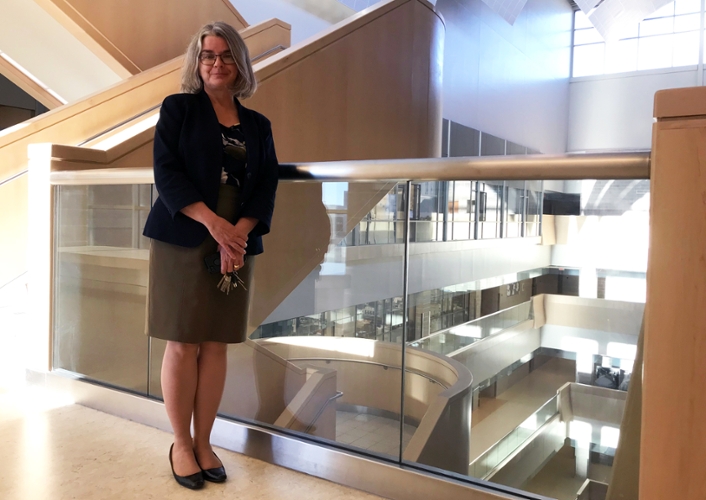
Drawing a curriculum road map
Dr. Regina Taylor-Gjevre, the assistant dean curriculum, has been busy drawing a program road map for the CoM's MD students
By Marg SheridanThe work of Dr. Regina Taylor-Gjevre, assistant dean curriculum, has both immediate and long-term effects on the College of Medicine’s students.
One of the main focuses of her role is the work she’s doing as Chair of the Curriculum Committee.
“The curriculum committee has a membership which includes faculty from various disciplines and student representatives, and is really the cornerstone for oversight and design of curriculum. It is the body to which the eight various subcommittees involved with curriculum – the assessment, program evaluation, year subcommittees and others – all report to,” Taylor-Gjevre said.
The assistant dean curriculum position was newly created when Taylor-Gjevre stepped into the role less than two years ago, and she’s found that much of her workload to date has centered on developing or clarifying processes around curriculum management and enhancing existing curriculum content and planning.
“We have been firming up how we communicate on the roles and responsibilities of the various subcommittees and of the curriculum committee itself towards the UGME program, particularly with respect to the accreditation standards,” she explained. “That has meant a re-framing of terms of reference and other documentation, as well as ensuring robust reporting structures and processes throughout the committee structures.
“We’ve also created a new subcommittee of our Curriculum Committee, the Curriculum Quality Review (CQR) subcommittee. Through that new subcommittee we have put in place some crucial curricular management and review processes.”
Those processes include the development of a curriculum change review and tracking system that helps to not only track what is being taught, but when the students are learning it, in addition to monitoring any changes to the curriculum.
“In the past, there was not a consistent or reliable way to track when and where curricular modifications were happening,” Taylor-Gjevre continued. “And it put the program at a bit of risk for unnecessary duplication, or potentially of content being dropped with (instructors) making the assumption it’s being taught elsewhere. And if everyone makes the same assumption you see how it’s easy for gaps to occur.”
It’s an important layer of oversight that she and her new curriculum specialist, Amanda Stalwick, have implemented alongside a standardized curriculum review program to ensure there’s a four-year cyclical quality review of each course. This new cyclic review, as Taylor-Gjevre explained it, makes sure that over that period there’s not a corner of the curriculum that hasn’t come under intense peer review through the oversight of the new CQR subcommittee.
“And that process I think is going to stand our program in good stead over the long haul.”
Improved tracking and curricular clarity has also had a direct impact with defining vertical themes in the current curriculum, making it easier for students to determine exactly where they’re learning specific content areas that may span more than one course.
“So for example, (with) pain management, the students learn about causes of pain, as well as appropriate diagnostic and management strategies for acute and/or chronic pain, but they don’t learn about it in any one particular, specific course - they learn about it in multiple courses as they traverse the four-year curriculum,” Taylor-Gjevre stressed. “So that is an example of a vertical theme – it’s an area of learning, and an area of the curriculum, which is in multiple courses and in multiple segments of the curriculum, facilitating higher spiraling of learning as the student advances in the program.”
These vertical themes, and another area called an integrative curriculum – where foundational subjects for example pathology, which are introduced in the first term as a module within the Principles of Biomedical Sciences course, but then subsequently are integrated into various other courses throughout the four years– have now been mapped.
“We had the sense that the students might not be recognizing these more integrated curricular components,” she continued. “and that it might be confusing as to how much or where in the curriculum these topics are covered. So we have identified and mapped out these aspects of the course contents and created vertical theme and integrated curriculum roadmaps (which) are now posted on the student curriculum page next to the course syllabi, allowing all students to track their curricular progress through the undergraduate medical program.
“What we’ve tried to do is make the location of the content more transparent, for both the students and for ourselves as faculty.”
